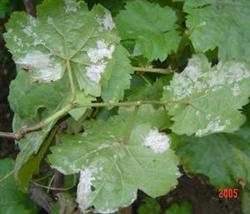Symptoms and control of insect pests in Myrica rubra

The main pests harmful to bayberry trees are pine caterpillar, debt avoidance insect and leaf curl moth, which generally hatch larvae in April or May. The growth characteristics and control methods of pine caterpillar pine caterpillar are briefly introduced as follows: 1. Pine caterpillar harms many kinds of forest trees. Its newly hatched larvae cluster new shoots to eat tender leaves, and disperse the food damage one week later, leaving only leaf veins in serious cases. Dendrolimus punctatus produces one generation a year, hatches larvae in early April, and cocoons into pupae on leaves in the first and middle of May. Control methods: ① newly hatched larvae should be killed in time, or sprayed with 90% trichlorfon 1000 / 1300 times or 80% dichlorvos 1000 / 1300 times; ② adults have strong phototaxis and can also be trapped and killed by light. 2. Debt-avoiding insects mainly harm the new shoots and leaves of Myrica rubra. Once a year, the mature larvae overwintered in the protective capsule, pupated in April of the following year, emerged as adults in the first ten days of May, and the female laid eggs in the protective capsule in the first ten days of May. The larvae were hatched in the last ten days of May, and the spitting leaves were attached together to make a new protective capsule and began to eat. Control method: spray trichlorfon or dichlorvos at larval stage. 3. The leaf roll moth larva harms the leaves of red bayberry, spinning silk and wrapping leaves on the tender leaves of the new shoots, and the larvae feed on the harmful mesophyll and pupate cocoons. Prevention and control methods: when it is found that the harm can be sprayed 1000 times of fenitrothion or 4000 times of pyrethrin.
- Prev

Postharvest Management of Waxberry
1. Scientific fertilization of bayberry trees consumes a lot of nutrients due to shoot growth and flowering in spring and summer. Flower bud differentiation and autumn shoot growth are in July and August, and autumn shoot growth directly affects the yield of the coming year. The amount of fertilizer application should depend on the strength of the tree and the amount of fruit, the general plant yield of more than 50 kg, the application of organic fertilizer 40.
- Next

Introduction to the symptoms of grape downy mildew
Symptom recognition: it is a fungal disease, mainly harmful to leaves, new shoots and young fruits. The injured part of the leaf first produces a yellowish brown water-immersed spot with an unclear edge, which gradually expands into an irregular or slightly round yellow brown spot with a diameter of 1 cm to 3 cm. The boundary of the lesion is unclear, and multiple spots can be connected into large spots and wet.
Related
- Moge, come on! The staff of the peasant association in the producing area of cantaloupe were frightened when the crowd gathered.
- Causes and Solutions of low Fruit setting rate of Apple
- Symptoms and control measures of passion fruit virus disease
- Fruit growing lesson: how do apple orchards keep high yields?
- Can you build orchards in the mountains? What are the pros and cons?
- How to manage the coloring period of Crisson grape?
- This paper introduces the processing technology of two kinds of fig products.
- How much is a month for retired teachers in rural areas by 2020?
- How can strawberry planting increase sugar content? We should pay attention to management in many aspects.
- What are the cultivation techniques on how to improve the yield of golden fruit?

